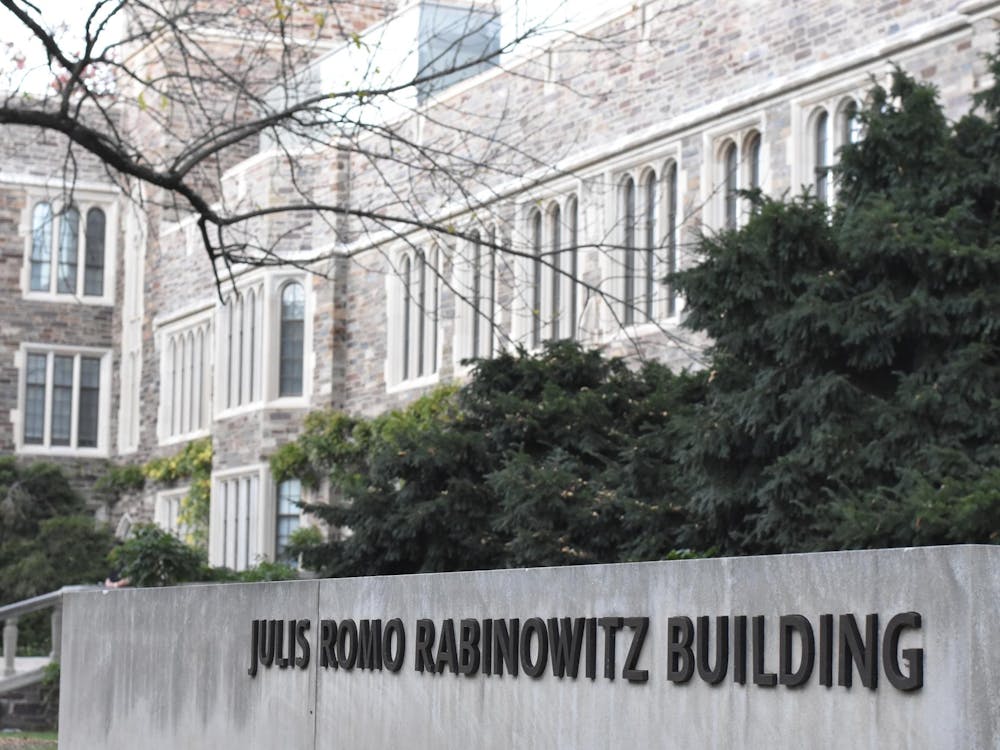The faculty had two objectives in adopting the policy. One was fairness: Students in one academic department should be graded according to the same standards as students in any other department. The other was clarity of message: Grades should signal the difference between ordinarily good and outstanding work.
I’m often asked why we needed an institutional policy. Why not simply exhort the faculty to grade in a more responsible fashion?
We tried moral suasion, starting with the first release of historical grading data by the Faculty Committee on Examinations and Standing in February 1998. The committee asked departments to study their grading histories, consider the appropriateness of their grading practices and communicate to their students the specific characteristics of work that matched each of the letter grades. The committee also devised reporting mechanisms to make faculty more aware of their own grading patterns, and reported annual grading results to the faculty.
But nothing changed. When I reported this to the department chairs in spring 2003, they decided we needed a new approach. We had a collective action problem: Faculty in one department had no incentive to grade more responsibly if faculty in another department continued to grade as they had before. The chairs asked me to go back to Examinations and Standing and draft a University-wide policy. In consultation with the chairs, the committee drafted and redrafted, and the faculty adopted our current policy in April 2004.
We identified an institutional norm of 35 percent A grades in undergraduate courses because that number reflected grading practices at Princeton until the early 1990s, when grades began to spike upward. It also reflected practices in a quarter of the departments (including some of the largest) as late as 2004, so we believed it to be a realistic target — importantly a target, not a cap.
Two things concern me about the policy. One has to do with faculty members and preceptors who misspeak about it. It is simply not correct to begin a course by announcing, “No matter how well you do in this class, I can only give 35 percent of you grades in the A range.” Nor is it helpful to say, at the end of the semester, “If it weren’t for the grading policy, most of you would have gotten As.” We’ve stated repeatedly that students who do A-quality work need to be graded accordingly. We don’t have grading quotas. What the policy establishes are grading expectations. These expectations are based on experience that suggests that if faculty members grade rigorously and responsibly, over time, on average, about 35 percent of the grades in each department — not necessarily in every course — will be in the A range.
My other concern is the fears of students and parents that the grading policy disadvantages Princetonians in the competition for employment opportunities and admission to graduate and professional schools. All of the evidence we have amassed suggests that this is not the case. Moreover, it is easy to overstate the effect of the policy on any individual student. The average GPA at Princeton has declined less than 0.1 point as the result of the new policy, and for students in some of the largest departments, there has been no change at all.
At the same time, despite the efforts we have made to communicate our grading policy beyond the campus, we have still not done as well as we need to, especially in the case of potential employers. I welcome the recent USG initiative to improve our communications strategies. If we communicate effectively, students at Princeton should be advantaged by the fact that receiving an A at Princeton really means that the student has done A work, and has done A work by Princeton standards.
One common focus of the debate about our grading policy is how to square it with the quality of the undergraduate student body. Since it is tougher than ever to be admitted to Princeton, don’t our superb students deserve more As? The reality is that even the most accomplished students don’t do their best work on every assignment in every course. Even if today’s Princeton students are better prepared than ever, we have a responsibility to stretch them further and expect more of them than we have before.
I’m often asked why our peer schools have not adopted similar policies. I wish they would! Recently three of our sister institutions have asked me for information about our policies and have told me they want to talk about what we’ve done and how we did it. I remain cautiously optimistic that other institutions will come to appreciate what we’ve demonstrated: Fairness and equity in grading can be achieved, and a university faculty can grade responsibly without damaging the prospects of its students in seeking employment or admission to graduate and professional schools.
Nancy Weiss Malkiel is the Dean of the College. She can be reached at nweiss@princeton.edu.








